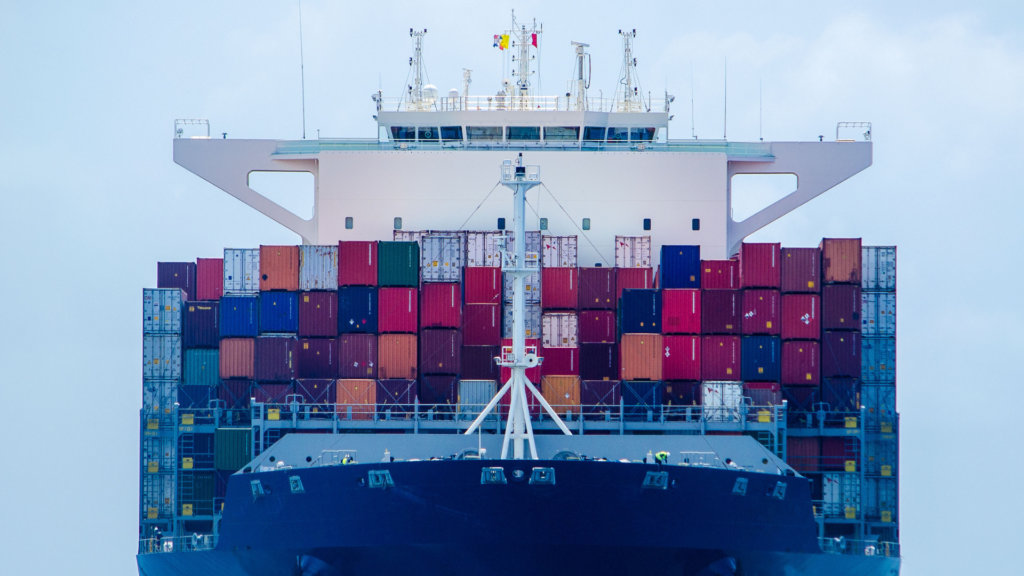Back to the Future
Back in the day, before there was a pandemic, it was almost unheard of to have more than 1 ship waiting to berth. We know, that’s wildly unheard of in this day and age.
For the last 2 years, ports have been struggling to keep up with the flow. For one port at least, the supply chain crisis has almost completely vanished. There are only 8 vessels waiting offshore of the LA/LB ports. Crazy, we know!
Don’t get too excited though. In North America as a whole, there are about 130 container ships waiting offshore. These numbers have remained at a steady high throughout this month.
But hey, progress has still been made and that is noteworthy.
Struggle to Survive
Although offshore, the numbers are looking good for the San Pedro Bay ports still have a long way to go onshore.
Much improvement has been made and conditions in the southern Californian port terminals are faring better than they were during peak season.
As of Monday, there were 50,176 empty containers at the Port of Los Angeles. That’s well below a short-lived spike to 90,397 in late November, but it's the same number of empties as in late February.
There were 66,467 loaded import containers at the port’s terminals, down from June and late October 2021 but still on par with levels in late November. Of the total, 31,150 were waiting to load on railcars. Normally, there would be around 9,000. There were 20,710 rail-bound containers that had been waiting nine or more days. Normally, none would dwell that long.
At the Port of Long Beach, there were still 14,877 containers dwelling nine days or more as of Monday. That’s well below highs seen in July and October 2021 but still above levels recorded in the first quarter.
Shifting Sides
So what’s driving this return to normalcy for the LA/LB ports?
It's twofold; import demands are easing majorly and ships are shifting to the East and Gulf coast ports. Plus, there was an added layer of concern because of the expiring labor contracts out West.
But when shippers moved away from the West Coast to avoid potential delays, overall numbers of ships waiting in queue to dock in North America rose.
This past week, there were still 130 vessels waiting: 41 off Savannah; 24 off Houston; 19 off New York/New Jersey; 14 off Vancouver, British Columbia; 13 off Oakland, California; eight off Los Angeles/Long Beach; seven off Virginia; and four off other ports. West Coast ports accounted for only 27% of the total.
So it’s kind of a catch 22 because on the one hand, shippers want to avoid potential backlogs on the West side but rerouting cargo eastward doesn’t seem to be too effective.
Are MPVs the MVP?
Multipurpose vessels (MPV) and general cargo ships seem to be a hidden valuable player in keeping up with the demands. Ocean carriers have been increasingly using these ships to supplement capacity specifically on the Intra-Asia trade lane.
Albeit only a small relief given the fact that Non-cellular (NC) ships hold only about 525 TEU on average, it still added a 21.6% capacity year over year for container carriers.
Every bit of added capacity brings us closer to the end of the supply chain crisis.
China Tariffs Continued but White House Stays Silent on Changes
Section 301 tariffs on hundreds of billions of dollars’ worth of imports from China remain in effect following numerous requests by domestic industries benefiting from them, according to a Sept. 2 notice from the Office of the U.S. Trade Representative. However, despite months of speculation, there is still no word from the White House on whether or when there might be changes to those tariffs.
USTR said it will now conduct a review of the tariffs that will solicit comments from all interested persons on issues such as the effectiveness of the tariffs in achieving the objectives of Section 301, other actions that could be taken, and the effects of the tariffs on the U.S. economy, including consumers. USTR states that details on this process “will be set out in subsequent notices,” and it is not known when that may occur or if there is any specific timeframe associated with it.
The announcement comes as the trade community continues to wait for word from the White House on potential changes to the China tariffs. There has been speculation for months about the nature and timing of such changes, which at one point were thought to possibly include a lowering of tariffs on some consumer items in response to rising domestic inflation. However, observers have opined more recently that increasing tensions in the U.S.-China relationship as well as the rapidly approaching U.S. midterm elections may have put any such changes on hold for the time being.
In the meantime, efforts to ameliorate the impact of the tariffs are continuing.




